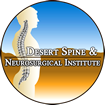- Brainstem gliomas are one of the most common tumors in this region.
- They account for about twenty-percent of intracranial tumors in children.
- Symptoms typically begin with cranial nerve palsy and hydrocephalus (resulting for example in double vision, headache, nausea and vomiting etc.).
- Treatment for them typically includes radiation and cerebrospinal fluid diversion (third ventriculostomy vs. shunt placement).
Brainstem tumor case presentation:
A 36-year old woman with one year history of headache and hypertension presented with diplopia, progressive headache, nausea and vomiting and loss of consciousness. MRI scan of her brain showed a tectal tumor obstructing the cerebral aqueduct and hydrocephalus. The Patient underwent stereotactic endoscopic third ventriculostomy followed by gross total resection of the tectal tumor which was found to be anaplastic astrocytoma. She was discharged from the hospital neurologically intact and shunt independent.
Operative Technique:
- Patient is placed in on the operating table and general anesthesia is induced. Her head is then fixed with a Mayfield head holder and the coordinates of patient’s brain is co-registered with the stereotactic navigation system.
- Two straight trajectories are planned using the preoperative MRI.
- A set of attachable Stealth stereotactic markers are attached to the neuro-endoscope which is then used to register the neuroendoscope to the navigation system. By using this technique, the precise location of the tip of the neuroendoscope is well defined and monitored in three dimension of space.
- Two monitors are used to view the operative filed. The first one is used to view the image transmitted from the neuroendoscope and the second monitor shows location of the tip of the neuroendoscope superimposed on the preoperative MRI.
- The image transmitted from the neuroendoscope and the images showing the stereotactic location of the tip of the neuroendoscope superimposed on the preoperative MRI views are shown simultaneously on the Stealth Station. The target is approached via the predetermined trajectory and while a “lock” on the target is maintained and distance to target is monitored using the Stealth stereotactic navigation as well as direct endoscopic view of the operative field in order to avoid injury to the surrounding structures.
- Using the stealth “guidance view”, by keeping the two targeting circles concentric, as well as looking at the images transmitted from the neuroendoscope, it is ensured that during and after Foramen of Monro is traversed, the structures adjacent to the formen are not harmed.
- A stoma (third ventriculostomy) is created using endoscopic scissor and spreader (alternatively bipolar coagulation and balloon dilation can be used for fenestration).
- The neuroendoscope is then inserted through the anterior burr hole in a similar fashion through the foramen of Monro which allows for a better access to the posterior third ventricle and pineal region. Posterior commissure and aqueduct are identified and after direct visualization of the tumor arising from the tectal region. The tumor is removed using grasping instruments inserted through the working channel of the neuroendoscope.
- The tumor is resected and an unobstructed view of the aqueduct is seen. Burr holes are covered with Gelfoam and burr hole covers and the skin is closed in two layers. External ventricular drain is not used routinely.
Frameless computerized neuronavigation has been increasingly utilized in endoscopic neurosurgery. Stereotactic neuroendoscopy can further increase the safety and accuracy of minimally invasive neurosurgical procedures by guiding neurosurgeons to the intracranial targets precisely. Although stereotactic neuroendoscopy may not be an essential tool in procedures such as standard third ventriculostomy, biopsy of large tumors, or large sylvian fissure arachnoid cysts, it can be an invaluable tool in lesions lacking clear landmarks, or in the case of the need to navigate through a small foramen of Monro.
This patient was discharged from the hospital with complete resolution of her neurological symptoms. She has returned to work and has remained neurologically intact and symptom free in Six months follow-up.
